A central promise of Obamacare was to spur competition between insurance companies to drive down health care costs and give consumers more choices. The results are mixed so far.
Months after the launch of the Affordable Care Act's health insurance exchanges, large insurance companies such as WellPoint still dominate many local markets -- although smaller insurers are challenging some of the biggest players in some markets, according to data from nine states analyzed by The Huffington Post.
Midway through Obamacare's first six-month enrollment period, new health care marketplaces have signed up about 3 million people for private insurance. Given the exchanges' rocky start, that is a sign the law might come close to its goal of signing up 7 million people by the end of March, when enrollment for this year concludes. But a lack of competition among insurers would frustrate another key goal for President Barack Obama's signature health care reform law.
While more than 120 insurance companies are offering coverage through the exchanges, the problem of poor competition isn't solved yet: New Hampshire and West Virginia have just one health insurance provider on their marketplaces, and 10 states have only two, according to data compiled by the Henry J. Kaiser Family Foundation. New York offers the most insurers, 16, followed by 13 in Wisconsin and 12 in both Ohio and Texas.
And HuffPost's analysis comparing insurer market share between 2014 to date and 2011 shows the status quo is mostly holding in several states -- including Rhode Island, California and Connecticut -- where companies with the biggest market shares in 2011 are leading enrollments via the state's exchanges. The 2011 data from the U.S. Department of Health and Human Services are the most recent compiled by the Kaiser Family Foundation.
Historically, the health insurance market has offered consumers just one or a small handful of insurance companies from which to choose. Prior to the insurance exchanges opening, one or two companies in 45 states controlled more than half of the market for people who buy coverage on their own rather than get it from their employers, according to a report published by the American Medical Association in November.
Competition among insurance companies is a key factor in encouraging lower prices and offering more benefits choices to consumers. Insurers with few rivals, or none, can exercise their clout by charging higher monthly premiums. Likewise, firms that command huge shares of their states' markets may discourage others from joining the exchanges in 2015 and later years, and drive out companies that fail to gain enough customers in the early going.
The market-share comparisons are imprecise, because companies can still sell to individuals outside of the marketplaces in most states. Insurers participating in exchanges also can sign up customers directly, and those enrollments aren't included in states' reports. Only nine state exchanges have reported how people signed up for each insurer. But those details have been revealing.
Most strikingly, Blue Cross and Blue Shield of Rhode Island enrolled 97 percent of the 11,800 state residents who signed up through HealthSource RI as of Jan. 4, in line with the 95 percent share of the individual market the company had in 2011. Neighborhood Health Plan of Rhode Island, the only other carrier on the state's exchange, signed up just 353 people.
Anthem Blue Cross of California, a WellPoint company, garnered 31 percent of the roughly 500,000 private insurance enrollments via Covered California as of Dec. 31, which compares to the 37 percent share of the individual market the company had in 2011.
WellPoint's Anthem BlueCross BlueShield unit attracted more than two-thirds of the 34,000 people who signed up for health insurance on AccessHealth CT in Connecticut as of Jan. 6, a higher rate than the 48 percent of the market it held in 2011. Meanwhile, the second- and third-largest insurers in the state three years ago, UnitedHealth Group and Aetna, aren't offering plans on the exchange, while a smaller company called ConnectiCare has 33 percent of exchange customers so far.
Elsewhere, the decisions by companies like UnitedHealth Group and Aetna to avoid the exchanges and the introduction of newly created insurers appears to be shaking things up.
Empire Blue Cross Blue Shield, another WellPoint company, is leading sign-ups on New York State of Health with 8 percent of the 169,000 individuals who enrolled as of Dec. 24 -- a smaller share than the 25 percent of the individual market the company held in 2011. The next-largest insurance providers that year, UnitedHealth Group and Lifetime HealthCare Group, aren't doing business on the exchange. Meanwhile, a brand-new company, Health Republic Insurance of New York, has the second-most exchange enrollments in the state, at 16 percent.
On Nevada Health Link, the Nevada Health Co-Op, founded under a provision of Obamacare, is leading enrollments with 37 percent of the 13,000 residents who bought coverage on the exchange. It's followed by Health Plans of Nevada, a unit of 2011 leader UnitedHealth Group, at 35 percent. WellPoint's Anthem Blue Cross Blue Shield, which had a 33 percent market share in 2011, attracted only 13 percent of exchange customers so far. Aetna, which had the third-highest market share three years ago, isn't available on the marketplace.
Similarly, Blue Cross and Blue Shield of Minnesota, which controlled 63 percent of the market in 2011, is second in exchange sign-ups with 24 percent of 27,800 enrollments through MNSure as of Jan. 18, trailing the 58 percent commanded by PreferredOne Health Insurance.
Regence Blue Shield isn't selling plans under its brand name on the Evergreen State's Washington Healthplanfinder, despite holding a 1 percentage-point lead over rival Premera Blue Cross in 2011, when each company had more than one-third of individual market customers. Premera has sold plans to 47 percent of the 67,200 exchange customers as of Dec. 31, compared to just 2 percent for BridgeSpan, a Regence company.
And in Massachusetts, which has had a health insurance exchange since 2007 under the state's landmark health care reform law, the two leading insurers in 2011 are being outpaced by other firms. Blue Cross Blue Shield of Massachusetts had 63 percent of individual health insurance customers in 2011, but only 11 percent of the 6,100 enrollments for 2014 via the Massachusetts Health Connector as of Jan. 22. Neighborhood Health Plan leads exchange sign-ups with 35 percent.

